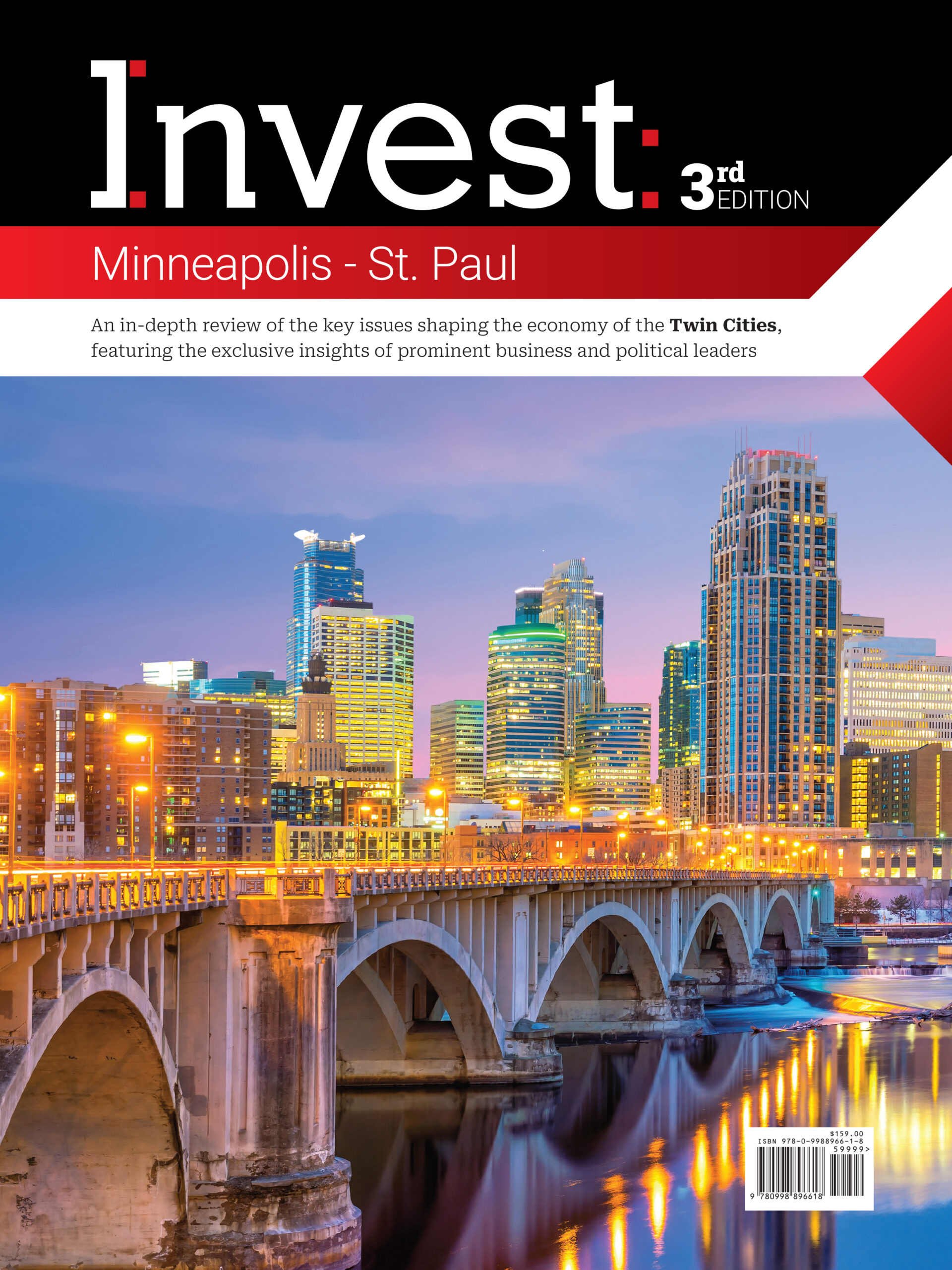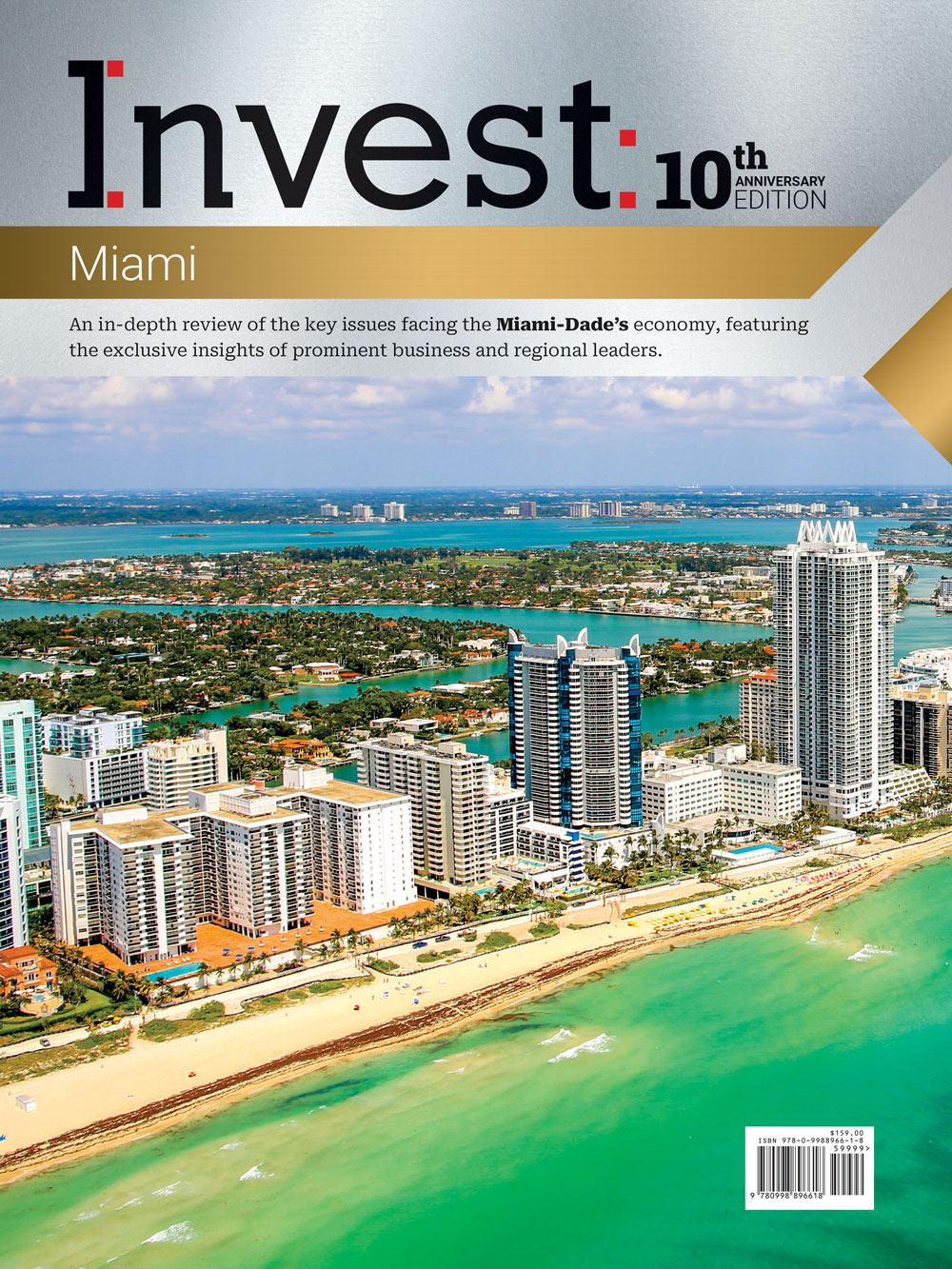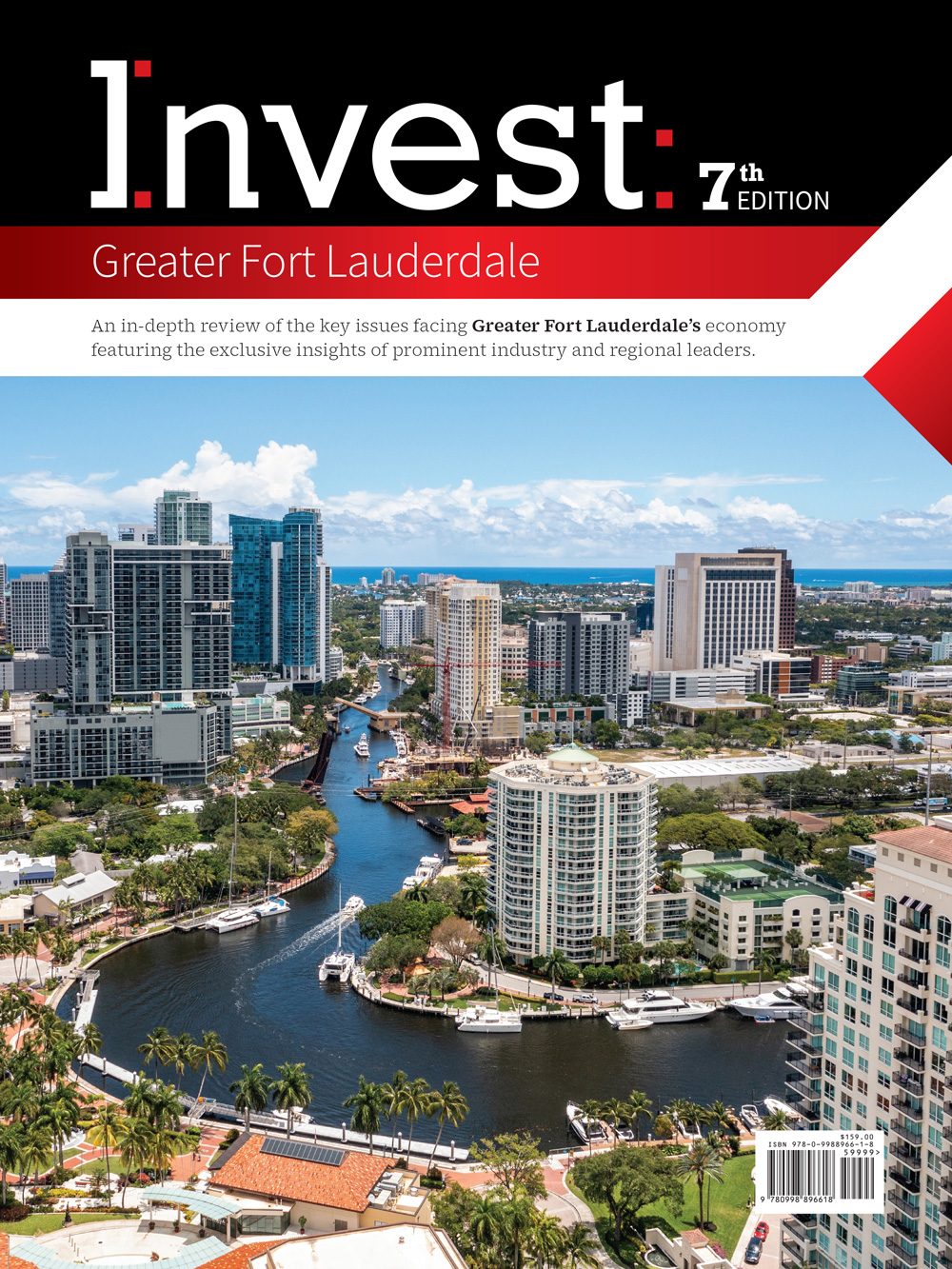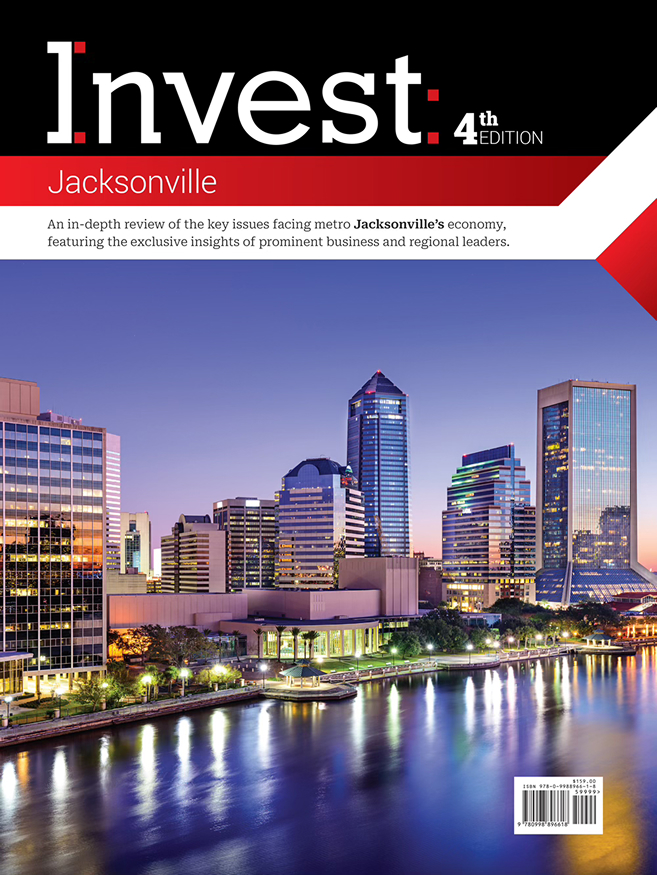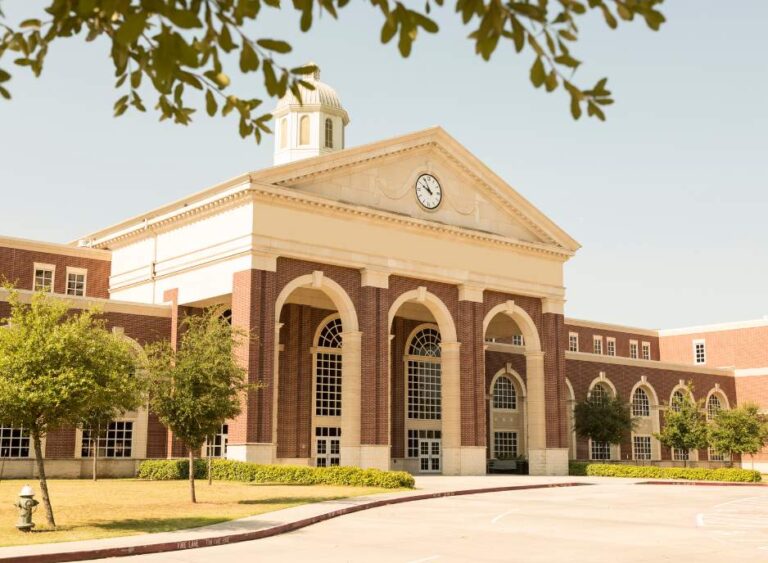Spotlight On: Harrison Keller, President, University of North Texas
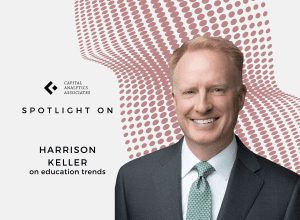 October 2024 — In an interview with Invest:, Harrison Keller, president of the University of North Texas, discussed how Texas’ growing, young population and the rapid advances in technology are changing workforce needs, why fostering partnerships by breaking down traditional barriers is important, and what makes Texas and Dallas the place to be.
October 2024 — In an interview with Invest:, Harrison Keller, president of the University of North Texas, discussed how Texas’ growing, young population and the rapid advances in technology are changing workforce needs, why fostering partnerships by breaking down traditional barriers is important, and what makes Texas and Dallas the place to be.
As the new president of the University of North Texas, what are your immediate priorities and your long-term vision?
I am excited about the opportunity to lead the University of North Texas. UNT is the largest public university in the Dallas-Fort Worth region and the third largest and fastest-growing public university in Texas. There is incredible potential here. Texas is now the eighth largest economy in the world with the fastest-growing economy in the United States, and Dallas-Fort Worth is leading the way. UNT plays a critical role in providing the talent and driving the innovation our region and our state will need to stay competitive into the future.
I recently became president at UNT, and it has been so inspiring to be on our campus with our talented students, faculty, and staff. In my career, I have worked with universities across the state and the country, and I know that few are as well-positioned as UNT, and no other region is as well-positioned as Dallas-Fort Worth. UNT aims to be part of a new generation of great American higher education institutions, through even stronger partnerships with industry and other educational institutions to expand opportunities for students across our region and beyond. These expanded partnerships will be very important for us to move quickly and meet the challenges of the moment.
What are some of the biggest trends impacting higher education today, especially regarding student enrollment and changing demographics.
Demographics are changing rapidly across the country. Over the past decade, Texas has been the fastest-growing state in the nation, adding more new residents than any other state. We are also one of only about a dozen states where our high-school population is not projected to decline between now and 2031. Our young, dynamic population gives us unique advantages.
At the same time, the pace of change in our state and national economies is accelerating. Our workforce needs are changing faster than anyone anticipated, especially because of rapid advances in artificial intelligence. Functions employers thought might be automated in a few years have already been automated or will be in the near future. These rapid changes mean it is especially important for employers and higher education to work closely together so our students are equipped with the knowledge and skills they need to be competitive for good jobs and healthy, productive lives.
How do you envision creating partnerships with industry leaders and the community to create more opportunities for students and faculty?
Traditionally, universities have operated in silos, almost like little city-states, and they are more interested in competing with each other than cooperating. That approach has limited our ability to affect change at scale. For UNT to move faster and have a broader impact for our students, our region, and beyond, we have to break down traditional barriers across academic disciplines and the lines that define typical university organizational structures. We also need to work much more closely with employers, policymakers, school districts, community colleges, and other universities to understand how social and economic needs and opportunities are changing. We can’t just stipulate the value of our degrees. We have to partner to expand opportunities that unlock our students’ and our region’s potential and provide the talent Dallas-Fort Worth, Texas, and the United States need to stay competitive.
[fusion_images order_by=”desc” picture_size=”auto” hover_type=”none” autoplay=”yes” autoplay_speed=”3000″ flex_align_items=”center” columns=”1″ column_spacing=”0″ scroll_items=”” show_nav=”yes” mouse_scroll=”no” border=”no” lightbox=”no” margin_top=”” margin_right=”” margin_bottom=”” margin_left=”” hide_on_mobile=”small-visibility,medium-visibility,large-visibility” class=”” id=”” caption_style=”off” caption_title_tag=”2″ fusion_font_family_caption_title_font=”” fusion_font_variant_caption_title_font=”” caption_title_size=”” caption_title_line_height=”” caption_title_letter_spacing=”” caption_title_transform=”” caption_title_color=”” hue=”” saturation=”” lightness=”” alpha=”” caption_background_color=”” fusion_font_family_caption_text_font=”” fusion_font_variant_caption_text_font=”” caption_text_size=”” caption_text_line_height=”” caption_text_letter_spacing=”” caption_text_transform=”” caption_text_color=”” caption_border_color=”” caption_overlay_color=”” caption_align_medium=”none” caption_align_small=”none” caption_align=”none” caption_margin_top=”” caption_margin_right=”” caption_margin_bottom=”” caption_margin_left=”” parent_dynamic_content=””] [fusion_image image=”https://capitalanalyticsassociates.com/wp-content/uploads/2024/07/CAA24_Invest-Insights-S6-Web-Banners-7.jpg” image_id=”64377″ image_title=”” image_caption=”” link=”” linktarget=”_self” alt=”” /] [fusion_image image=”https://capitalanalyticsassociates.com/wp-content/uploads/2024/07/CAA24_Invest-Insights-S6-Web-Banners-10.jpg” image_id=”64380″ image_title=”” image_caption=”” link=”” linktarget=”_self” alt=”” /] [fusion_image image=”https://capitalanalyticsassociates.com/wp-content/uploads/2024/07/CAA24_Invest-Insights-S6-Web-Banners-9.jpg” image_id=”64379″ image_title=”” image_caption=”” link=”” linktarget=”_self” alt=”” /] [fusion_image image=”https://capitalanalyticsassociates.com/wp-content/uploads/2024/07/CAA24_Invest-Insights-S6-Web-Banners-8.jpg” image_id=”64378″ image_title=”” image_caption=”” link=”” linktarget=”_self” alt=”” /] [/fusion_images]
How do you plan to foster innovation and elevate the academic programs at the University of North Texas?
There is a mythology that higher education, and faculty in particular, are resistant to innovation. In my experience, that is just not true. Faculty excel by working at the frontiers of their disciplines. The bigger issue I have seen is that universities have not traditionally been well-organized to support their leading innovators, whether those are faculty, students, or staff. One of the things I am most excited about at UNT is engaging with our students, faculty, and staff to identify opportunities for us to innovate faster and to have greater impact for the benefit of our campus, our region, and our state.
What makes Dallas a great location for higher education and for businesses to locate or relocate?
The Texas economy is leading the way for the United States, and Dallas-Fort Worth is leading the way for the Texas economy in terms of economic and population growth. We have a young and dynamic population and an unusual diversity of higher education institutions and opportunities, including good community college leaders, committed K-12 leaders, and university leaders who are open to collaboration. The University of North Texas is deeply committed to leading in innovation and expanding opportunities for students on our campus and across the region, working together with other like-minded partners.
How do you plan to adapt your programs and services to better support adult learners and different demographics at the university?
We need to expand our course and program offerings in different times of the day, in different locations, and online to meet adult learners where they are. Providing better support for all of our students is top of mind for me, and this is especially important for adult learners who have to juggle multiple responsibilities and challenges.
I should add that in addition to being the president of the University of North Texas, I am dad to three teenagers. With my own children and their friends as they transition from high school to higher education, we have been talking a lot about what they might need to be ready for the future. We all faced enormous challenges during the pandemic that are still not resolved, and on our campus we have never seen so much demand for academic remediation and mental health services. Across the state and across the nation, you can see these learning losses in the data. At UNT, we are responding by doubling down on our commitment to student success. By this, I mean not only supporting our students in earning degrees, but also ensuring those degrees align with what they need for good jobs and healthy, productive lives with meaning and purpose. We can’t just reduce success to our graduation rates; I embrace a broader view of student success and our responsibilities as a public university.
How is technology transforming education and are there any innovative changes in the pipeline?
Higher education is both impacted by and leading changes in technology, especially with rapid advances in AI. One of the projects we initiated under my leadership at the Texas Higher Education Coordinating Board involves a partnership among leading Texas universities and community colleges to develop resources for faculty, so they can incorporate these new technologies into teaching and learning. UNT is part of this collaborative effort. These issues are too big, and the pace of change is too fast for any institution to tackle alone. We have to work together across institutions, with K-12 education, and even more importantly, with industry.
When I talk to industry leaders about how they confront the pace of change because of AI, several have told me they have to rework their training for employees at least every 180 days and sometimes every 90 days to keep pace with changes in their industry. Things are moving too fast, and the implications are too important for any individual institution to address alone. Working together, I’m confident we can harness these new technologies to drive far greater educational and economic opportunities than we’ve ever experienced. We’re just getting started, and I’m looking forward to what we’ll accomplish.
For more information, please visit:


